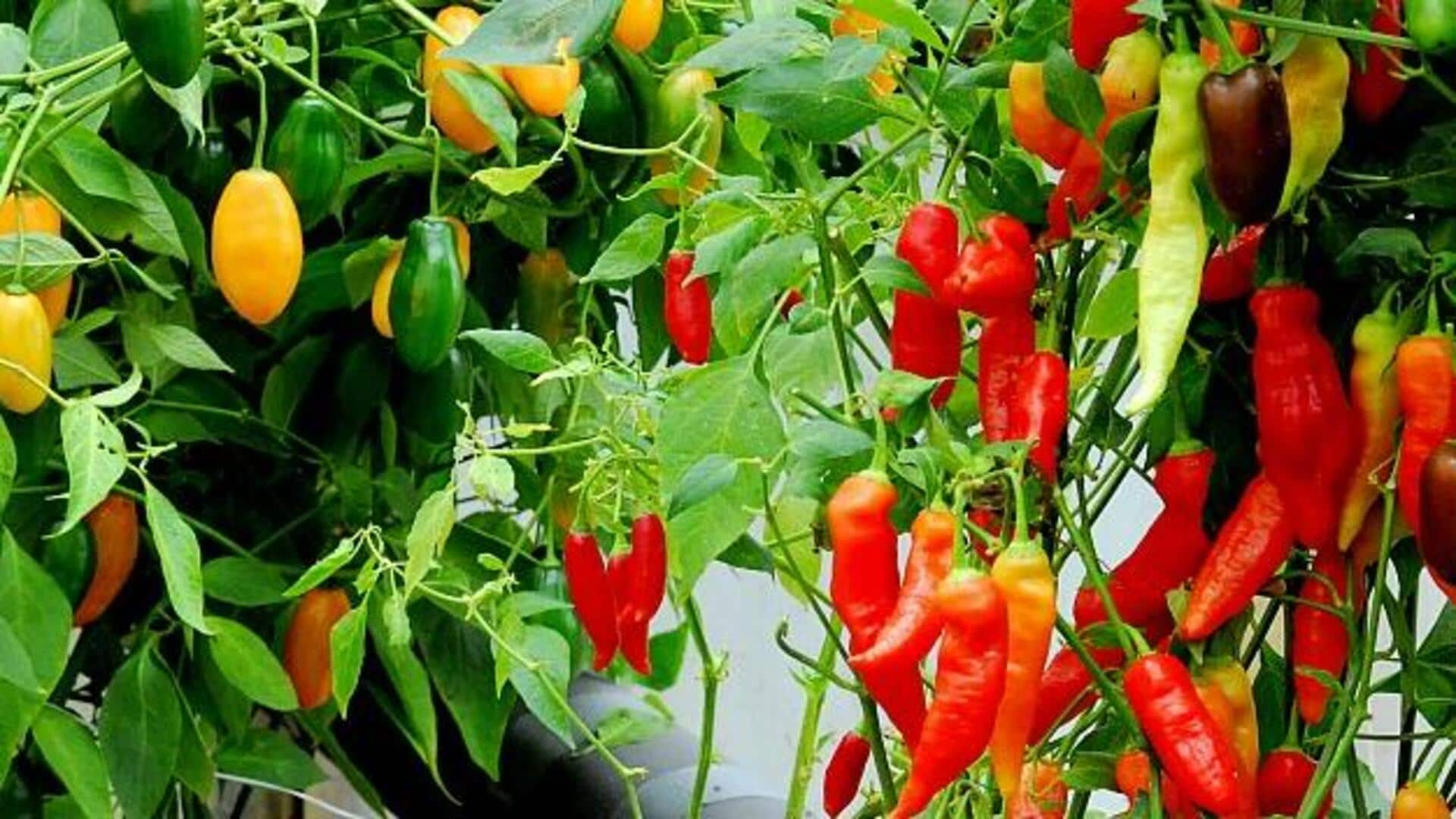
Growing chili peppers in hydroponic systems
What's the story
There's something deeply satisfying about growing your own chili peppers at home, and hydroponic systems take that experience to a whole new level.
These self-contained green thumbs let you cultivate year-round, free from the whims of weather and the limitations of lackluster soil.
Today, we'll dive into how to optimize your hydroponic haven for growing potent chili peppers with ease.
System selection
Choosing the right hydroponic system
While there are many types of hydroponic systems, not all are ideal for growing chili peppers.
For beginners, the Deep Water Culture (DWC) and Nutrient Film Technique (NFT) systems are recommended. They are simple yet effective.
These systems ensure that your chili plants have continuous access to nutrient-rich water, resulting in quicker growth and potentially higher yields.
Nutrients
Optimal Nutrient Solutions
Chili peppers require a specific nutrient profile, with a particular emphasis on increased potassium and phosphorus needs.
A hydroponic nutrient solution with an N-P-K ratio of 5-10-10 is recommended.
It is vital to monitor and adjust the pH, as chili peppers prefer a slightly acidic environment.
Maintaining a pH between six and 6.5 provides the ideal conditions for growth.
Lighting
Lighting requirements
Adequate lighting is essential for cultivating healthy chili peppers hydroponically.
They need a minimum of eight hours of direct sunlight or its artificial equivalent every day.
For indoor setups, LED grow lights are ideal. They emit full-spectrum light that mimics sunlight while being energy-efficient.
Keep your lights positioned approximately two feet above the plants. This way, they get enough light without getting too hot.
Climate control
Temperature and humidity control
Chili peppers thrive in warmth, so aim for temperatures between 70 degrees Fahrenheit and 85 degrees Fahrenheit.
If you're growing them inside, you might need to use a heater in winter or an air conditioner in summer to keep the temperature right.
Plus, keeping the humidity around 60% will stop problems like blossom drop, which can really cut down your harvest.
Maintenance
Pruning and pollination techniques
Pruning is essential for bushier growth and increased fruit production on chili pepper plants.
Removing early flowers allows the plant to concentrate on establishing strong roots and foliage.
For chilies cultivated indoors or in the absence of natural pollinators, you can aid fruit set by manually pollinating the flowers.
Use a small brush to gently transfer pollen or simply shake the flowers to mimic the action of bees.